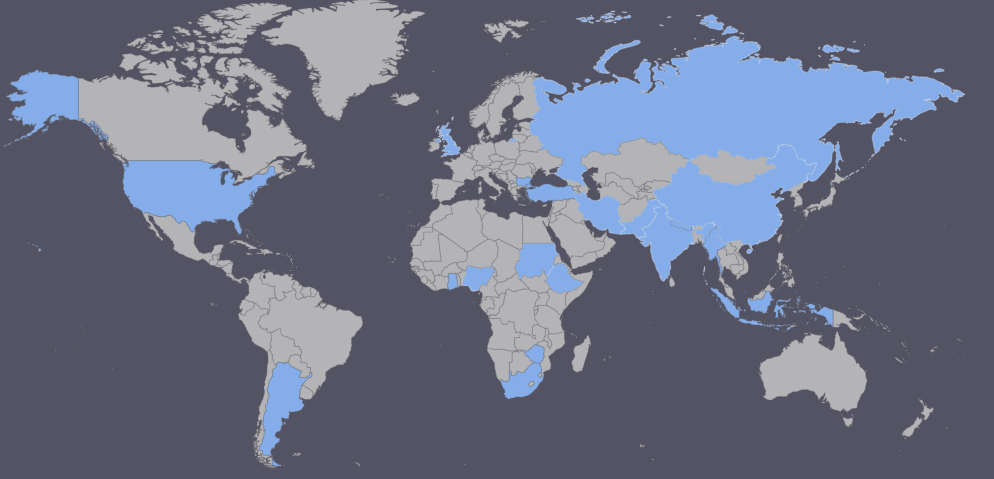Petrophysical Evaluation of Two Wells in Offshore Niger Delta, Nigeria
Keywords:
Niger Delta, Petrophysics, Hydrocarbon saturation, Water saturation, PetroleumAbstract
This study provides accurate behavior of petrophysical properties with depth for this formation by using Interactive Petrophysics software. The results of the analysis revealed the presence of different sand and shale units, from the analysis of the geological logs comprising gamma-ray and electrical resistivity, the Sonic, Density, Gamma, Neutron, Resistivity and Net Pay Zone value for the reservoirs. The total porosity in the reservoirs was found to range from 0.006 to 0.514, Bulk volume of water in the reservoirs is between 0.042-0.144, Volume of shale for the reservoirs is between 0.034-0.198, the water saturation ranges from 0.147 to 0.519 and the hydrocarbon saturation 0.481 to 0.853. Good well-to-well lithology correlation was established across the fields studied. It was found from this research that the bulk of the hydrocarbon encountered in the Niger Delta basin was found to be within a depth range of 2853.77-3413.76 m (9359.5-11200.5 ft), with net pay zone ranging from 16.91-32.00 m (55.5-105 ft). The hydrocarbon reservoirs in this study were found to be in the Agbada formation, which is in conformity with the geology of the Niger Delta, Nigeria.
References
Agbasi, O.E., Inyang, N.J., Ibout, J., 2013. Estimation of Water Saturation in Niger Delta Nigeria Using Wire-Line logs. Journal of Applied Physics (IOSR-JAP) 3 (4), 66-71.
Aigbedion, I., 2007. Reservoir Fluid Differentiation case study from the Oredo Field. International Journal of Physical Sciences 2 (6), 144-148.
Andisheh, A.A., Reijers, T.J.A, Nwajide, C.S., 1997. Sequence stratigraphic framework of the Niger Delta. Paper presented at the AAPG International Conference and Exhibition, Vienna, Austria
Archie, G.E., 1942. The electrical resistivity log as an aid in determining some reservoir characteristics. Petroleum Technology 5, 54-62.
Archie, G.E., 1952. Electrical Resistivity Log as an Aid in Determining Some Reservoir Characteristics. Trans. AIME 146 (1), 54-62.
Doust, H., Omatsola, E., 1990. Niger Delta in divergent/passive Margin Basins. In J.D. Edwards. and P.A. Santogrossied, (eds.), Am. Assoc. Petrol. Geol. Memoir 48, 201-238.
Evamy, D.D., Hammering, P., Kmoap, W.A., Rowlands, P.H., 1978. Hydrocarbon Habitat of the Tertiary Niger Delta. American Association of Petroleum Geologist Bulletin 62 (2), 1-10.
Jong, S.L., 2005. Reservoir Properties Determination Using Fuzzy Logic and Neural Networks from Well Data in Offshore Korea. Journal of Petroleum Science and Engineering 49, 182-192.
Kulke, H., 1995. Nigeria. In H. Kulke, ed., Regional petroleum geology of the world: Part II. Africa, America, Australia and Antarctica: Berlin, Gebruder Borntraeger, 143-172.
Schlumberger, 1985. Log Interpretation Principles/Applications. Well Services, Houston.
Schlumberger, 1987. Log Interpretation Charts. Houston, Texas.
Short, K.C., Stubble, A.J., 1967. Outline of geology of Niger Delta. Bulletin of the American Association of Petroleum Geologists 91, 761-779.
Worthington, P.E., 1985. The Evaluation of Shaly-Sand Concepts in Reservoir Evaluation. The Log Analyst 26 (1), 23-40.
Weber, K.J., Daukoru, E.M., 1975. Petroleum geology of the Niger Delta: Proceedings of the Ninth World Petroleum Congress, volume 2, Geology: London, Applied Science Publishers, Ltd., 209-221.
Downloads
Published
Issue
Section
License
Copyright (c) 2020 Ubong Essien, Emmanuel Akpan, Udeme Inyang

This work is licensed under a Creative Commons Attribution-NonCommercial-NoDerivatives 4.0 International License.
The authors keep the copyrights of the published materials with them, but the authors are aggee to give an exclusive license to the publisher that transfers all publishing and commercial exploitation rights to the publisher. The puslisher then shares the content published in this journal under CC BY-NC-ND license.



